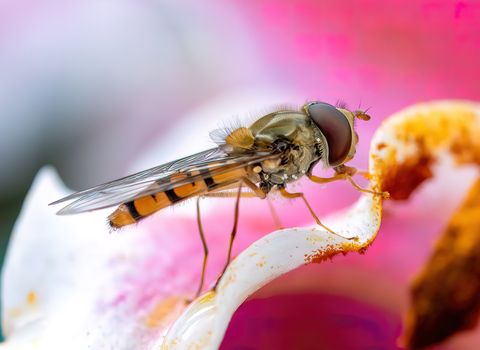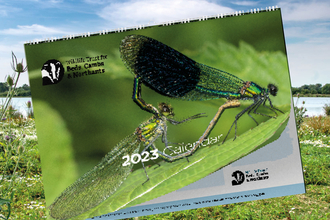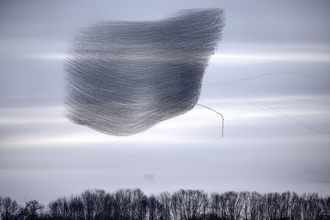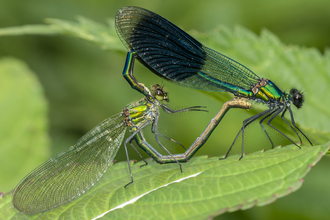I have been photographing insects and other invertebrates ever since I received a macro lens for my camera several years ago. While, at first, these creatures were just interesting subjects to photograph, I soon developed a fascination with their behaviour and lifestyle. I subsequently started looking for them whenever I was out, and have been surprised at just how much life can be seen, even in the coldest months. For example, the image below is of a Dicyrtomina ornate springtail which I spotted on a piece of damp wood in a local nature reserve in December. Springtails (Collembola) are small, wingless arthropods closely related to insects, and are active at all times of the year.
How to get into Macro Photography
Credit: Peter Swan - 2nd place photography competition 2022
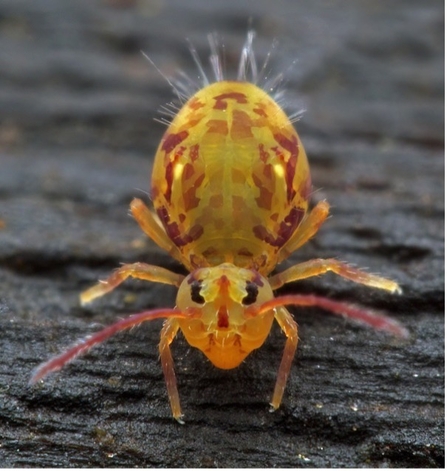
Peter Swan
Spring and early summer is the best time of year to look for invertebrates. Alongside the different species of butterflies which emerge at this time of year, keep an eye out for various bees which include hairy-footed flower bees, mining bees, and nomad bees. Relatively common but spectacular species to look for include the Red and Black Froghopper, dock beetle, and ruby-tailed wasp. Later in the summer the various species of bush-cricket and grasshoppers make good subjects, and can be located easily thanks to their song (stridulation). Speckled bush-crickets are an exception, however, and while they are relatively common in the southern part of the UK, can usually only be heard with the aid of a bat detector.
In terms of equipment, while the best results can be had with a dedicated macro lens on an interchangeable lens camera, it is possible to get into macro photography in a number of ways. For example, you can buy inexpensive clip-on lenses for your mobile phone that allows you to focus closer. While phones have the advantage of a large depth of field (the amount of the subject that is in focus) you have to get right up close to your subject. However, many insects are skittish and won’t let you come so close.
The best time of day to photograph many invertebrates is early in the morning – because the temperature is low, they are usually less active. Insects such as butterflies or damselflies are often found perching on the top of reeds and stems of grass, and you can get almost within touching distance if the ambient temperature is low enough.
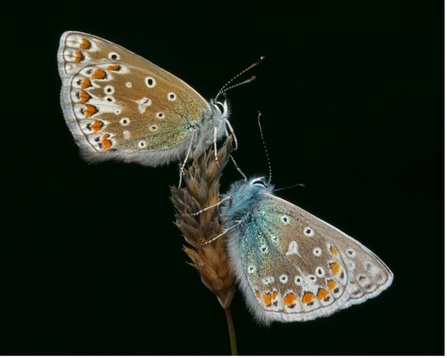
Common blue butterflies (Polyommatus icarus) - c.Peter Swan
If you have a DSLR or bridge camera, you can buy close-up filters such as the Raynox DCR-250 which fit over the end of the lens and allows you to focus closer. These filters also improve the magnification of dedicated macro lenses. For shorter focal-length lenses, extension tubes are more effective. They work by moving the lens further from the image plane, thereby increasing magnification. If you can afford it, however, a dedicated macro lens will provide the best results. As for which camera/lens to use, most systems will provide you with great results, though I personally use the Olympus 60mm macro paired with the OMD-EM1 mark ii - the perfect mix of image quality and portability.
One important factor is lighting. When I first started macro photography, all of my photos were taken using natural light. However, if the light was poor, I often had to use a high ISO, resulting in grainy images. At the same time, shooting in bright sunlight is often not ideal either – many insects such as beetles have reflective wing casings or bodies which can cause harsh highlights in bright sunlight. The solution is to use a diffused flash – flash on its own will lead to harsh highlights and shadows; however, the diffuser evens out the light. The background will also be dark owing to flash falloff, which can help the subject stand out. Initially I made my own flash diffusers, however last year I bought a custom ‘Cygnustech’ diffuser which I have been extremely happy with.
While macro photography overall involves quite a steep learning curve, and can lead to a lot of missed opportunities and deleted photos, it is very satisfying when you get it right. Looking out for all the various invertebrates and minibeasts can also be a mindful experience in its own right. You can do insect photography in your own garden or local park, and you’ll be surprised at how many different species you can find without travelling far from home.






